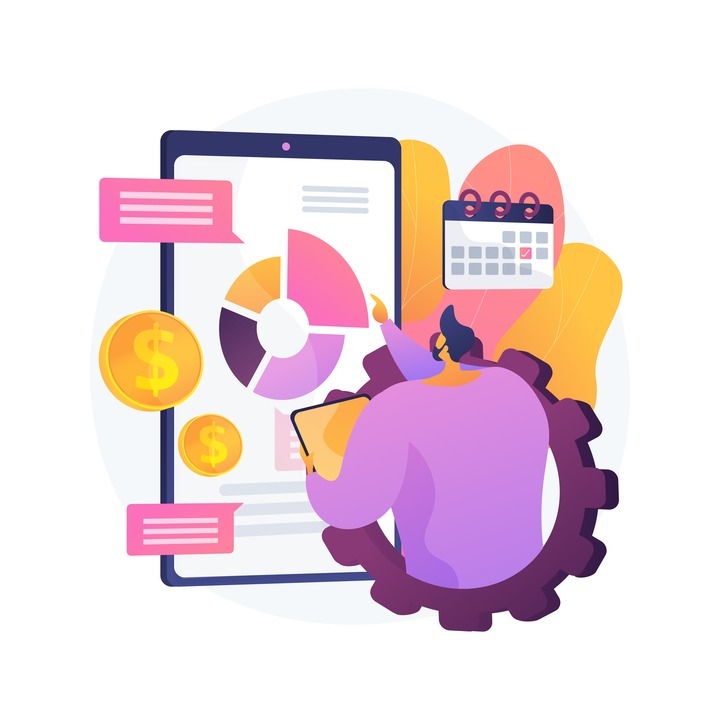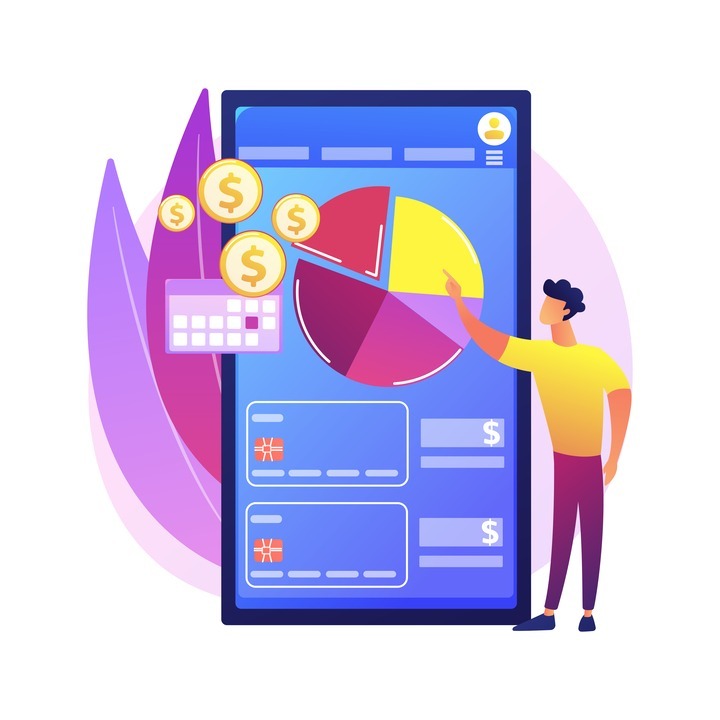As you gear up for your mobile app project, you’re excited about making it happen. However, an important point lies ahead—navigating the complex landscape of your mobile application’s costs. Expecting a budget that aligns seamlessly with your application development can quickly turn to frustration and concern when unexpected figures surface.
At Mallow, we empower our clients by ensuring they have the information needed to make informed decisions. Clarity regarding the costs involved in partnering on a project with us is the core part of our approach. We prioritise transparency and furnish comprehensive details about the financial aspects of each project. We understand that an informed client is better equipped to collaborate effectively, make strategic choices, and attain optimal results in their application development.
This article offers a thorough examination of the costs related to the development of a mobile project in collaboration with Mallow. By exploring these aspects, you will gain a more defined understanding of the anticipated expenses associated with partnering on a mobile project with the Mallow team.
What factors contribute to your application development cost?

Size of your application development team
The relationship between the number of team members and tasks should be balanced to ensure efficient completion. Your decision on team size and structure significantly impacts the overall cost of application development. Therefore, meticulous planning and effective task allocation are essential for optimal results.
Having the right-sized application development team is crucial to facilitate a smooth development process and minimise additional expenses associated with knowledge transfer and other processes. By reducing disruptions, both time and costs during the application’s development can be effectively lowered.
Below is a table providing a rough framework for determining an appropriate team size aligned with the various types of tasks commonly addressed by development teams.
| Size of the team and capabilities | A Developer | 2-3 Developers | Squad – Includes 5-12 members | Multiple Squads |
| Minimal requirement (MVP) | ✔ | ✔ | Not Required | Not Required |
| Handling basic project complexities | ✔ | ✔ | Not Required | Not Required |
| Handling both frontend and backend dependencies | ✔ | ✔ | Not Required | Not Required |
| General maintenance-related works of an application (tasks like version upgrades, issue fixing, regular performance monitoring, managing third-party services) | ✔ | ✔ | Not Required | Not Required |
| Implementing multiple features and integrations simultaneously | ✖ | ✔ | ✔ | Not Required |
| Maintenance of an application with medium-level complexity in features and architecture | ✖ | ✔ | ✔ | Not Required |
| Maintenance of an application with high-level complexity in features and architecture | ✖ | ✖ | ✔ | ✔ |
| Sharp Deadlines/Short- spanned deployments | ✖ | ✖ | ✔ | ✔ |
| Working on multiple tech stacks simultaneously | ✖ | ✖ | Sometimes not enough | ✔ |
| Carrying multiple modules in an enterprise-level application | ✖ | ✖ | ✖ | ✔ |
| Handling applications demanding multiple and complex integrations | ✖ | ✖ | ✖ | ✔ |
| Handling enterprise-level systems which involve microservices and serverless architectures | ✖ | ✖ | ✖ | ✔ |
Types of resource
The total development cost of your application is significantly influenced by the roles essential for its successful completion. The allocation of resources in each role directly impacts the budget of your application development.
When assembling a development team, it’s crucial to enlist specialised resources tailored to your specific requirements.
Outlined below are various roles commonly utilised in development projects and the points at which their expertise becomes crucial.
- If you’ve decided to venture into creating a mobile application, it’s crucial to have a skilled developer as part of your team. The demands of your application may require the involvement of both front-end and back-end developers to handle the user interface and the intricacies of business logic.
- For seamless scalability, peak performance, and proficient hosting of your mobile application, it is strongly recommended to integrate a DevOps team member into your project.
- If progress is impeded by insufficient UI in your app, seeking assistance from a design expert is advisable. Their expertise can significantly enhance the overall UI and UX of your application.
- To elevate the overall quality of your application, the inclusion of experienced quality analysts into your team can have a substantial impact.
- Business analysts play a crucial role in bridging the gap between business needs and technical solutions. During the pre-development phase, they collaborate with your development team to ensure clear direction, defining the application’s purpose, functionalities, user flow, and problem-solving approach for the best outcome.
- To foster cohesive teamwork, manage resources efficiently, mitigate risks, and implement effective planning, it’s highly recommended to include a project manager in your team. Having a project manager can facilitate seamless collaboration among your team members and streamline project execution. Their oversight ensures that goals are met, resources are optimised, and potential challenges are proactively addressed.
Refer to the table below for an overview of the various types of resources and capabilities to consider before incorporating them into your development team.
| Types of Resource | Capabilities |
| Developer | Builds new applications. Revamps existing application. Provides maintenance support. Writes reliable code. Does unit testing. Builds and maintains APIs.Improves application’s overall performance |
| DevOps | Coordinates with project managers for architecture planning. Setting up CI/CD. Deploys updates. Adheres to proper security measures in the production workloads. Analyses the root cause for hosting-related errors in production. Implements procedures to tackle system troubleshooting and maintenance. Ensures the application meets the current industry standards |
| Designer | Analyses the customer needs and implements the same in prototypingIdeation of designs. Execution of proper theme and colourations as per the expectations. Ensures the way of presentation is compatible enough |
| Quality Analyst | Ensures the quality of the software delivered. Develops and executes plans for testing. Implements and monitors test scripts and monitor reliability and performance. Monitors and recommends preventive measures. Investigates customer complaints and product issues |
| Business Analyst | Acts as a consultant to your business idea. Evolves your raw business solution. Acts as client’s representative in handling the team. Builds requirements and wireframes.Suggests enhancements to the business solutions |
| Project Manager | Collaborates efficiently with the client and external team. Ensures proper communication and meets the sprint deadlines. Handles overall project management. Ensures the development process is optimised efficiently. Entirely manages and coordinates the project |
Level of expertise
Not every task in the application development journey necessitates senior developers or associate team leads. Assigning responsibilities based on expertise ensures efficiency and cost-effectiveness.
Gartner identifies AI-augmented development as a strategic trend, enabling software engineering teams to deliver high-quality applications while reducing toil and friction in the software development life cycle. By integrating AI technologies, such as generative AI and machine learning, developers can enhance productivity and optimize resource allocation.

Therefore, it’s crucial to categorise tasks based on the requisite skill levels for efficient completion. By clearly defining your full requirements and assigning responsibilities according to individual expertise, you can optimise your team’s potential to the fullest.
Acknowledging that initial requirements may evolve during the process, having an initial work plan in place can help mitigate uncertainties.
Refer to the table below for a rough overview of how a developer’s proficiency aligns with their expertise level within your team.
| Levels of expertise for developers | Details of the proficiency |
| Junior | Ability to write and maintain code. Fix minor bugsWrite unit test cases. Furnish the required development reports etc. |
| Mid-level | Builds code efficiently. Automated testing. Handles deployments. Takes up discussions about project planning. Provides maintenance-related support etc. |
| Senior-level | Mentoring the junior team members. Reviews the code and architecture. Drives the project planning. Delivers high-quality tested codes. Provides technical suggestions to the team etc. |
| Associate Team Lead | Involving in security and enhancement-related decisions. Working with cross-platform developers (DevOps engineers)Formulating software documentation and overall Quality-ensuring procedures. Provides technical suggestions to the team |
| Team Lead | Mentors and leads development teams. Audits code and architecture. Ensures overall quality of the services rendered. Visions the roadmap and ensure alignment with the objective. Plans implementations based on the business requirements and reviews estimates |
Breaking down the phases of application development
Let’s imagine a situation where you’re working on a moderately complex application that includes 4-5 distinct features distributed across 3 modules. Different stages of the development process significantly influence the final product. These stages include planning, design, development, testing, and deployment. The distribution of resources, both in terms of time and cost, differs across these stages. This breakdown offers a well-rounded view of the investment needed for each stage of creating the application.
| Stage | Contribution (%) |
| Planning & Requirements | 5-10% |
| Design | 10-15% |
| Development | 30-40% |
| Testing & Issue fixes | 10-20% |
| Deployment | 5-10% |
| Maintenance & Updates | 10-15% |
| Scalability | 5-10% |
*Please note that the figures presented for the contribution to the overall application development cost and working hours are intended for general reference only. The exact calculations may vary based on the unique aspects and specific requirements of your project.
Does the development cost vary based on the complexity of the application?
Yes, complexity significantly influences the overall cost of application development. Factors contributing to complexity include the number of required modules, types of third-party integrations, business algorithms, and application architecture.
A report by Grand View Research highlights that key factors influencing mobile app development costs encompass design complexity, platforms supported, features, security, location, and the size of the development team. For example, developing an Android-based mobile app may take 3 to 10 months and cost between USD 14,900 to USD 119,900, whereas an iOS-based app may take 3 to 8 months and cost between USD 9,900 to USD 99,900.

The subsequent information details how you can anticipate the overall cost figures when examining your complete project requirements.
| Levels of Complexity | Cost | Average Timeframe |
| Basic (MVP) | $10,000-25,000 | < 3 months |
| Average | $30,000-50,000 | 3 months – 9 months |
| Enterprise-level solutions | Start from $65,000 | > 6 months |
*It’s crucial to highlight that the figures mentioned above are aimed at offering a general estimate of the potential cost range. The provided estimate covers only the expenses associated with the mentioned services and does not encompass additional costs, including hosting providers like AWS, Heroku, Azure, and third-party services such as SendGrid, Twilio, and others. Keep in mind that the estimated figures may undergo changes based on your specific project requirements.
Factors that impact your application development costs beneath the surface
Beyond application development, there are additional factors that require careful consideration and financial planning. While the development of an application is undoubtedly crucial, having a comprehensive understanding of the extra costs associated with application development is equally important. A holistic budgeting approach is essential for the success of application development.
The following details provide an overview of the common factors that typically contribute additional costs to your application development.
- Usage of third-party services – The integration with third-party systems or APIs may demand more development hours than initially anticipated, owing to compatibility issues, insufficient documentation, or unforeseen complexities. Additional time invested in troubleshooting and adjusting to integration changes can result in increased costs.
- Security and compliance – Ensuring the application aligns with security and compliance standards may require specialised expertise, security audits, vulnerability assessments, and potential legal consultations. While these efforts are crucial, they can lead to increased development costs, especially when addressing unforeseen security vulnerabilities.
- Performance optimisation – Fine-tuning the application for optimal performance may necessitate revisiting and adjusting code architecture, database structures, and algorithms. Although crucial, this process can prolong development timelines and necessitate additional resources.
However, it’s crucial to recognize that, while we can anticipate optimising the application to a certain extent, the true outcome will only become apparent once the application is live and operational.
- User experience refinement – Collecting user feedback and implementing iterative improvements to the user interface and experience frequently results in enhanced user satisfaction. Nevertheless, these enhancements may require additional design and development efforts, leading to an increase in the overall development cost.
- Maintenance and updates – Following the initial launch, continual maintenance, bug fixes, updates, and feature enhancements are necessary to maintain the functionality and competitiveness of the application. These post-launch activities contribute to the long-term cost of owning the application.
How much does hiring team members for a mobile project cost?
Up to this point, you’ve acquired insights into different types of resources, their capabilities, the significance of selecting the right expertise, and the approach to determining an optimal team size for your application development.

The table presented below provides a thorough summary of the projected costs associated with hiring resources from diverse services, each specialising in distinct areas of expertise. This will furnish you with valuable insights into the financial considerations of involving these resources, assisting you in assessing potential expenses for your project based on your specific requirements and needs.
The Monthly Cost (In USD)
| Types of resources | Junior | Mid Level-1 | Mid Level-2 | Mid Level-3 | Senior | Associate Team Lead |
| Developer | $2000.00 | $2400.00 | $2800.00 | $3200.00 | $4000.00 | $5000.00 |
| DevOps | $2000.00 | $2400.00 | $3200.00 | $3800.00 | $5000.00 | $6000.00 |
| Quality Analyst | $1200.00 | $1400.00 | $1800.00 | $2000.00 | $2800.00 | $3200.00 |
| Designer | $1200.00 | $1400.00 | $1800.00 | $2000.00 | $2800.00 | $3200.00 |
| Business Analyst | $1600.00 | $1800.00 | $2000.00 | $2400.00 | $3200.00 | – |
| Team lead | $6000.00 | |||||
| Technical Lead/ Technical Manager/ Project Manager | $7000.00 | |||||
Your ultimate checklist to reduce your overall application development cost
✅ Define clear project goals, features, and scope boundaries. Document requirements comprehensively to minimise future changes.
✅ Agile development approach.
✅ Create prototypes or high-fidelity wireframes to validate concepts and designs early. Identify and resolve issues before development begins.
✅ Investing in automated testing processes can help catch bugs much earlier in the development process, saving time and resources that would otherwise be spent on manual testing.
✅ Reduce human error and accelerate the development cycle by automating the possible processes.
✅ Opt for cloud infrastructure to minimize hardware costs and enable rapid scalability. Pay-as-you-go models allow you to avoid significant upfront investments and adjust resources based on demand. According to IDC, worldwide spending on public cloud services is forecast to reach $805 billion in 2024 and double by 2028, highlighting the growing reliance on cloud platforms for scalable and cost-effective application development.
✅ Prioritise essential features that deliver the most value to users.
✅ Delay good-to-have features to future releases to manage initial costs.
What does working on a mobile project with Mallow look like?
Having gained an overall understanding of the costs involved in collaborating on a mobile project with Mallow, your focus should now turn to acquiring details about the actual development process that Mallow follows. This encompasses the various phases your application will go through, from initiation to eventual completion. Equally crucial is the manner in which updates and progress reports regarding the project are conveyed to you.
To gain a deeper understanding of how the journey of working on a mobile project with Mallow would look like, do checkout this article titled with what is it like to work on a mobile project with Mallow. This will provide insights into the application development process that your mobile application will go through.
Still, wondering where your next step should be? Feel free to reach out to our team.
Your queries, our answers
Mobile application development involves creating software applications designed to run on mobile devices like smartphones and tablets. These apps can be native (built specifically for iOS or Android), cross-platform (designed to work on multiple platforms), or hybrid (combining elements of both).
Our mobile app development process includes the following stages: requirement gathering and analysis, design and prototyping, development and coding, testing and quality assurance, deployment, and post-launch support. Each stage is crucial to delivering a high-quality application.
To gain deeper insights into the experience of working on a mobile project with Mallow, explore more details here.
The choice between native and cross-platform development depends on your project’s goals, budget, and target audience. Native apps offer better performance and a more tailored user experience, while cross-platform apps allow for faster development and lower costs by using a single codebase for multiple platforms. For a detailed comparison of Native vs. Hybrid development, explore our comprehensive analysis to help you make an informed choice.
Mallow develops mobile apps for iOS, Android, and cross-platform solutions. We use the latest technologies and frameworks to ensure your app performs optimally on the platforms that matter most to your users.
Choosing the right features for your mobile app depends on understanding your target audience, business goals, and budget. We work closely with you to prioritize features that will provide the most value to your users and align with your business objectives.
At Mallow, we offer ongoing app maintenance and updates as part of our post-launch services. This includes regular updates to improve performance, add new features, and ensure compatibility with the latest operating systems. For more details, get in touch with our team.
Yes, Mallow assists with the entire app store submission process, including meeting the guidelines for Apple’s App Store and Google Play. We ensure your app is ready for submission and provide support to help it get approved.
Mallow uses a variety of technologies and frameworks for mobile app development, including Swift and Objective-C for iOS, Kotlin and Java for Android, and React Native and Flutter for cross-platform development. Our technology choices are driven by the specific needs of your project.
Our testing process includes functional testing, performance testing, security testing, usability testing, and compatibility testing across different devices and operating systems. We ensure your app is bug-free and performs optimally before it goes live.
The cost of developing a mobile app depends on several factors, including the app’s complexity, features, platform (iOS, Android, or both), and the development team’s expertise. Costs can range from $10,000 to $150,000 or more. To know more, check out how much it costs to work on a mobile project with us.
The development timeline for a mobile app varies depending on the complexity of the project. A basic app may take 2-4 months to develop, while a more complex app with advanced features can take 6-12 months or longer.
Choosing the right features for your mobile app depends on understanding your target audience, business goals, and budget. We work closely with you to prioritize features that will provide the most value to your users and align with your business objectives.
Yes, Mallow offers comprehensive post-launch support, including monitoring, updates, bug fixes, and enhancements. We ensure your app remains up-to-date and continues to perform well after it’s launched.
A mobile app can enhance customer engagement, increase brand visibility, provide better service through personalized experiences, and create new revenue streams. It also allows you to reach a broader audience by making your services more accessible on mobile devices.
Getting started with Mallow is easy! Simply reach out to us to discuss your project. We’ll work with you to understand your goals, define your requirements, and create a development plan that meets your needs. Let’s bring your mobile app idea to life!.
Security is a top priority at Mallow. We implement advanced security measures, including encryption, secure authentication, and regular security audits, to protect your app from potential threats and ensure data integrity.
To learn more about how we handle and implement these security measures, check out more details here.
Author
SathishPrabhu
Sathish is an accomplished Project Manager at Mallow, leveraging his exceptional business analysis skills to drive success. With over 8 years of experience in the field, he brings a wealth of expertise to his role, consistently delivering outstanding results. Known for his meticulous attention to detail and strategic thinking, Sathish has successfully spearheaded numerous projects, ensuring timely completion and exceeding client expectations. Outside of work, he cherishes his time with family, often seen embarking on exciting travels together.



